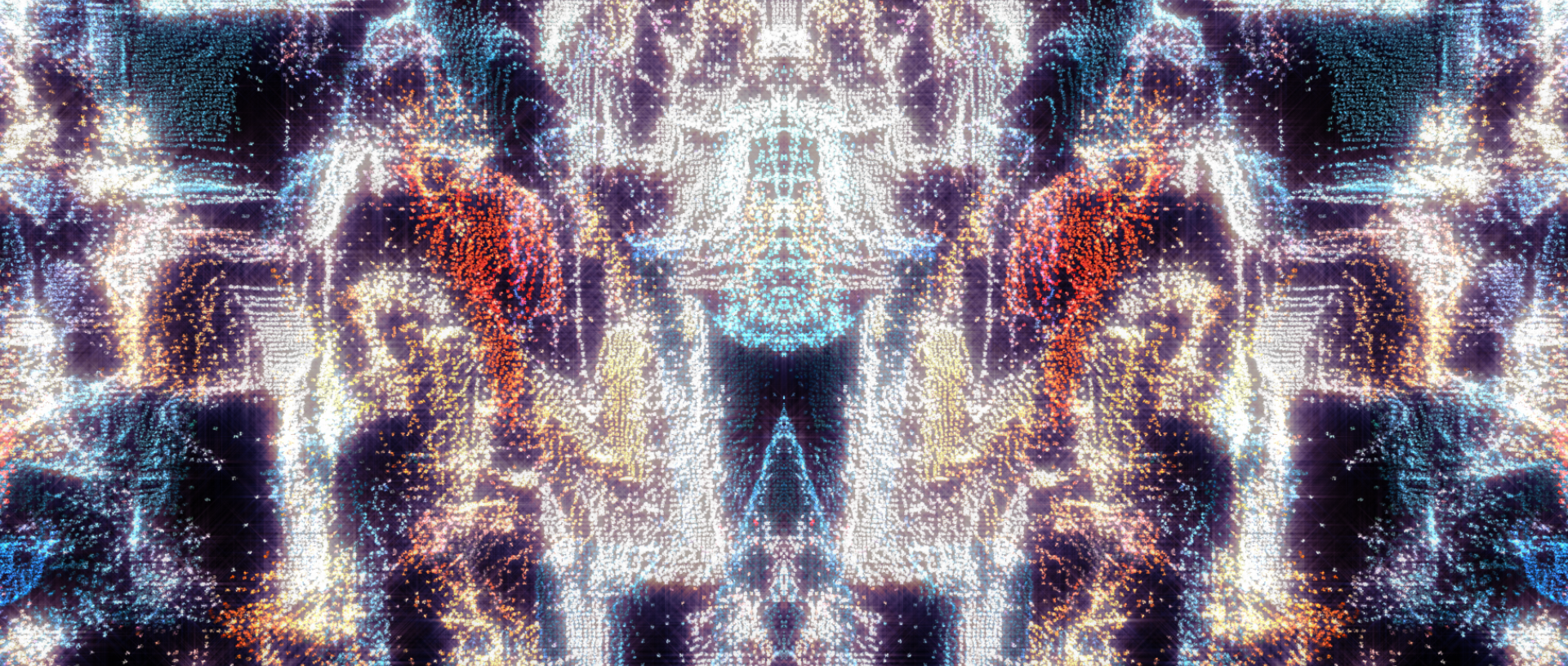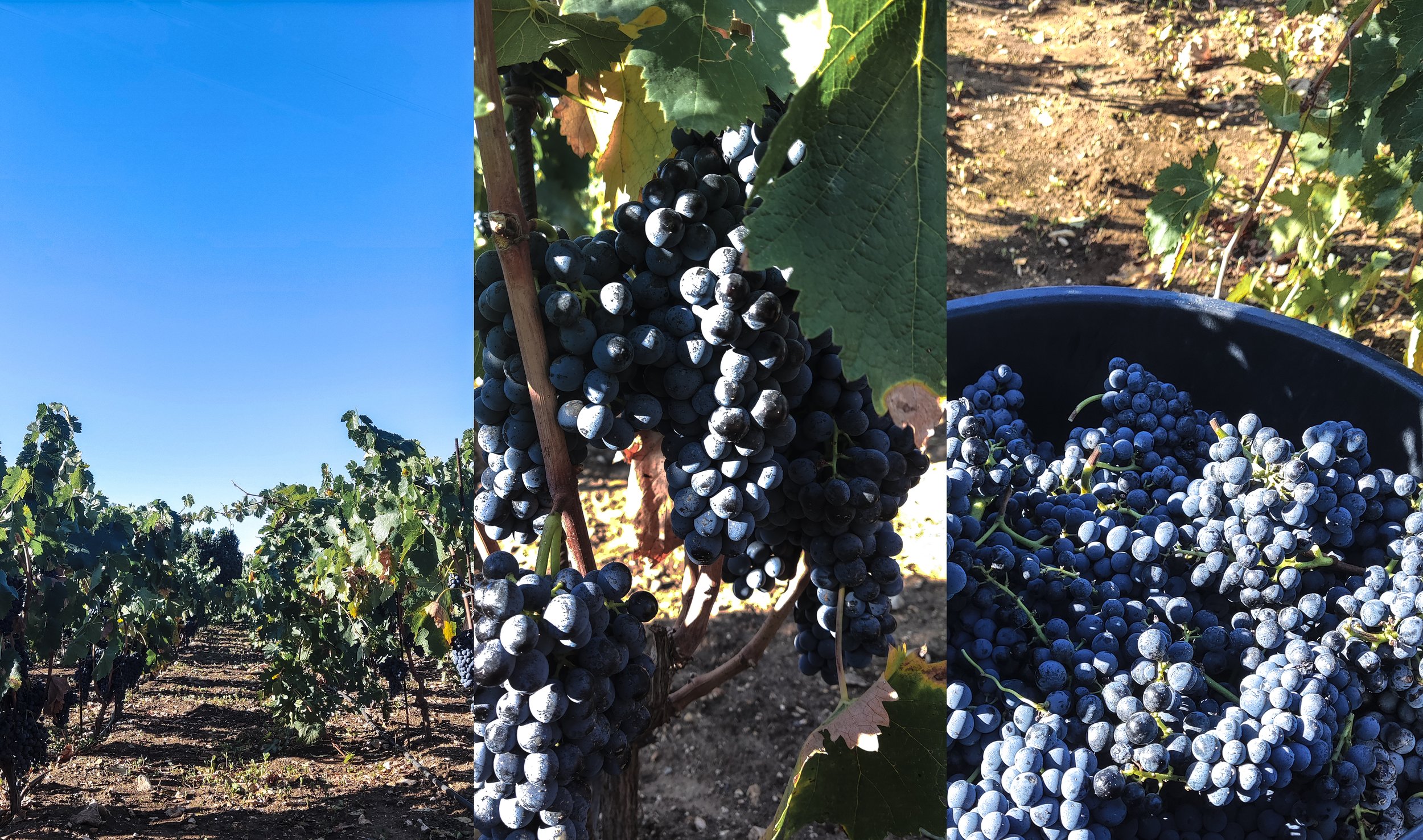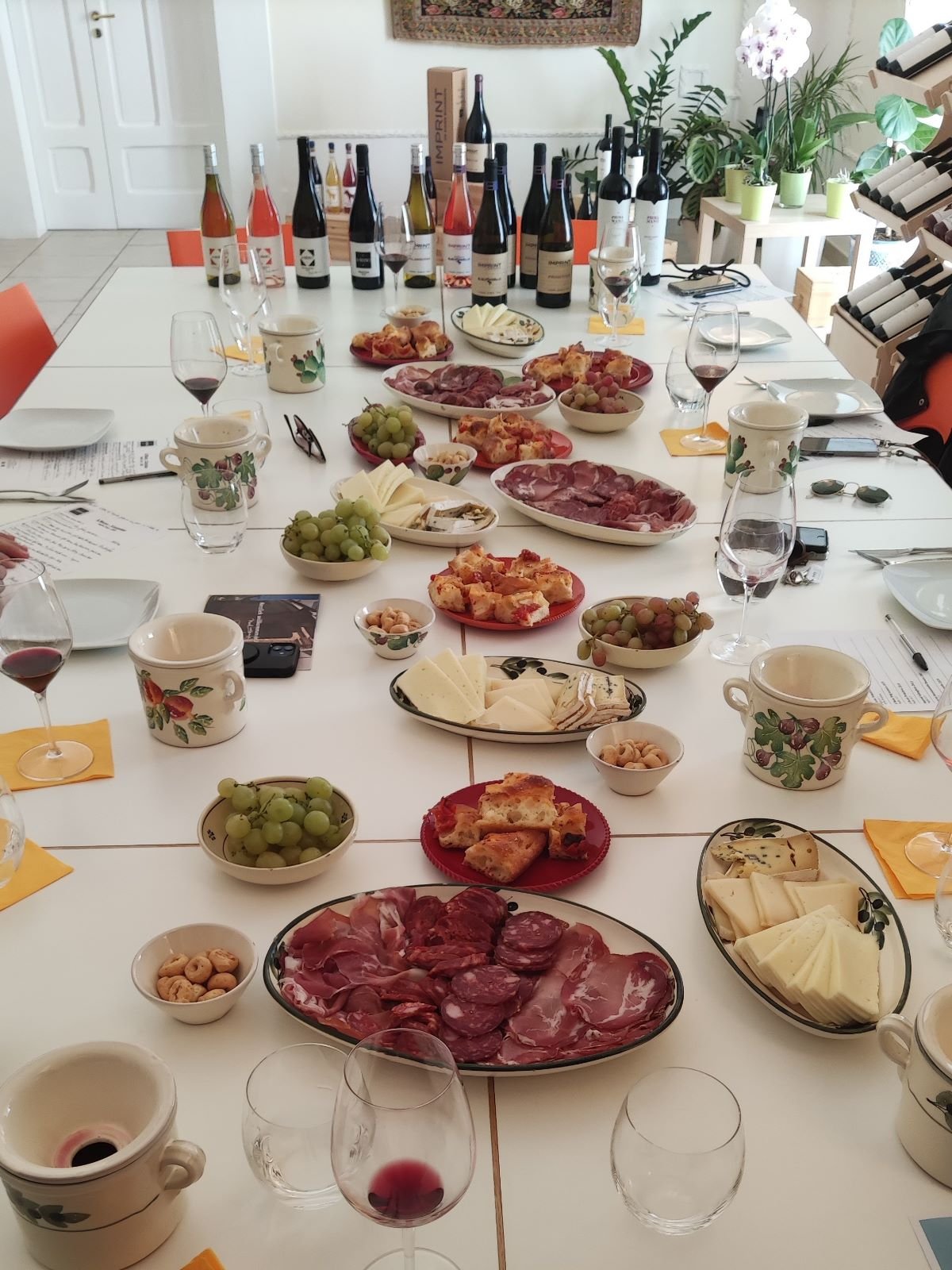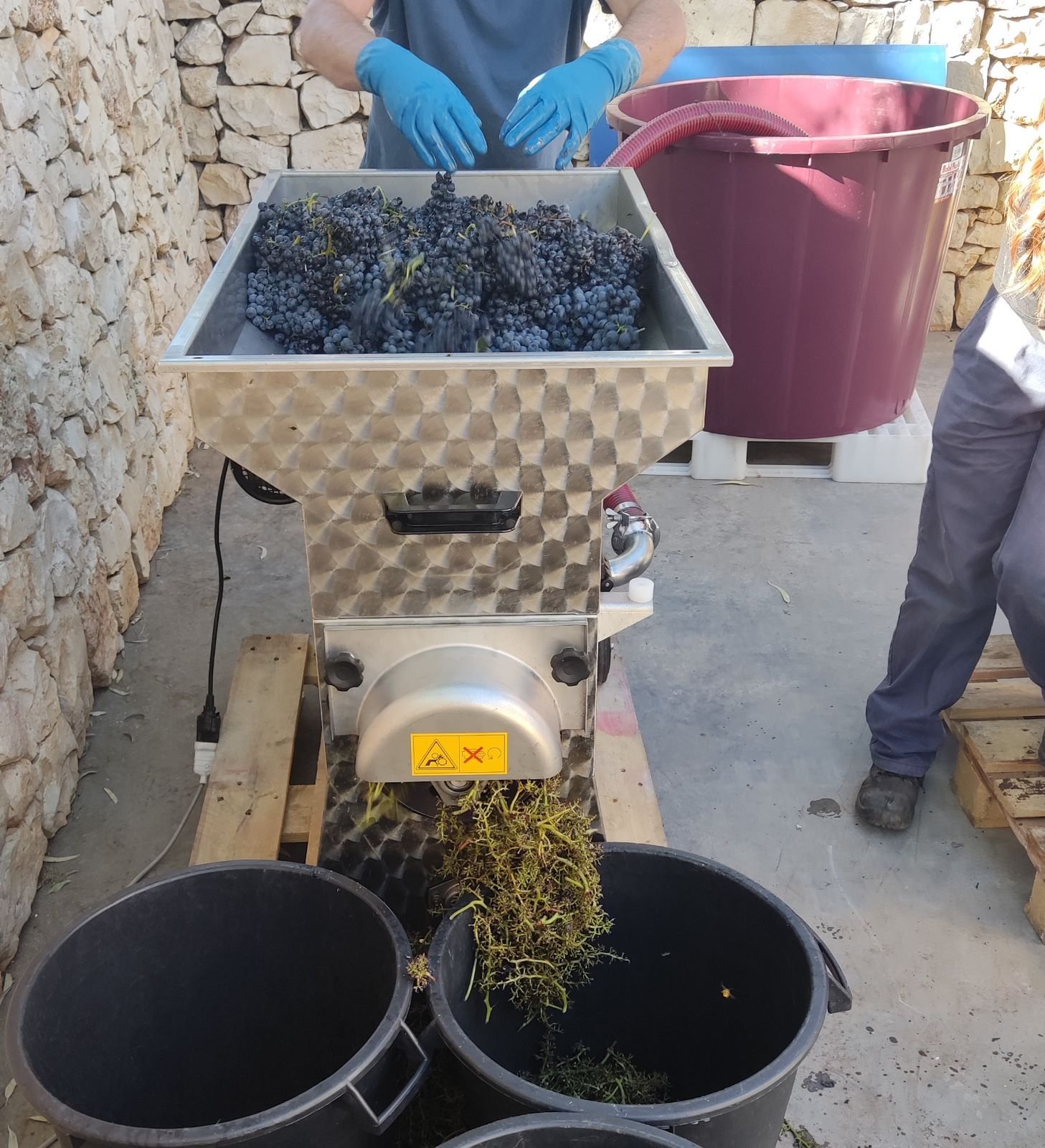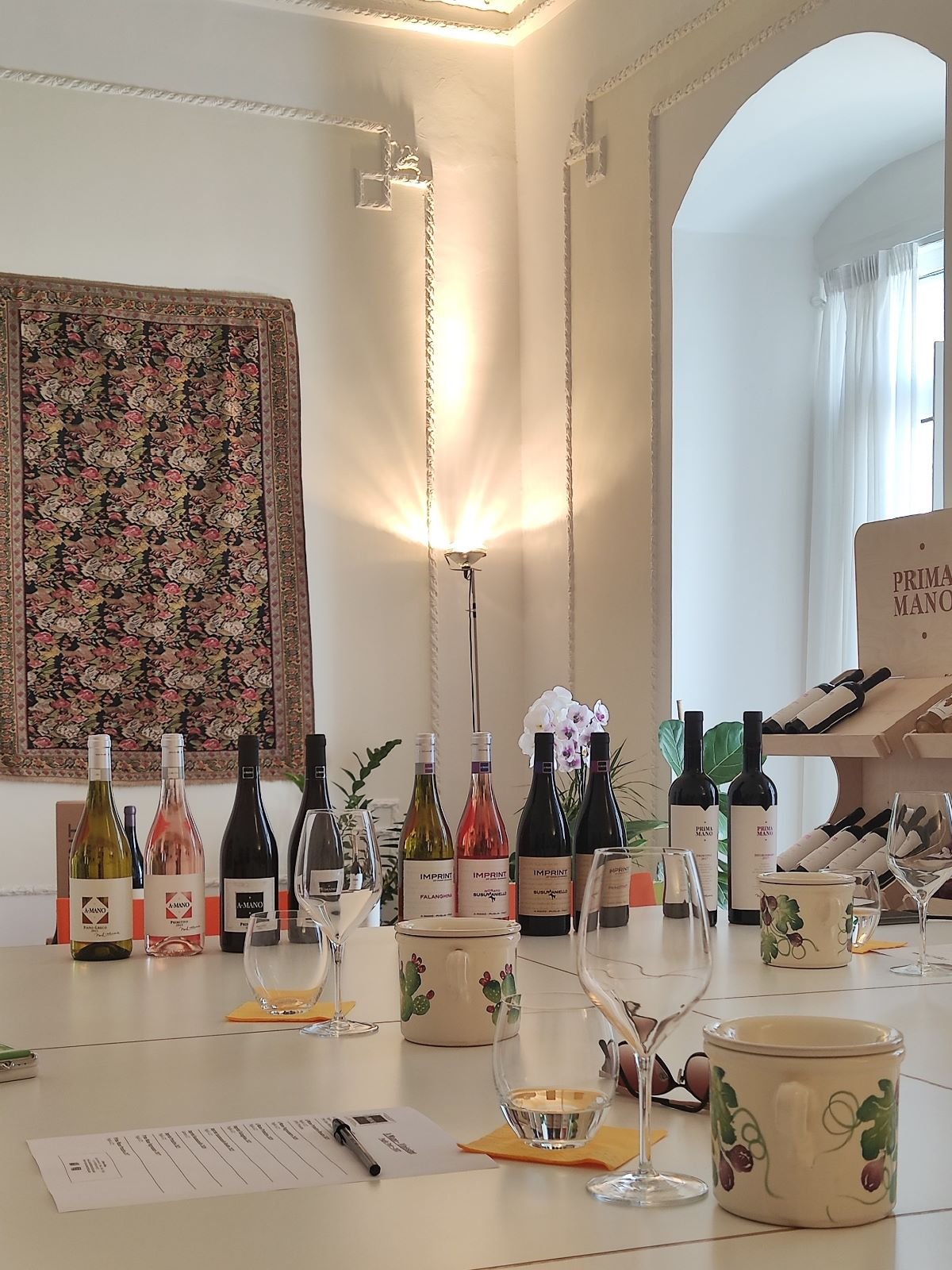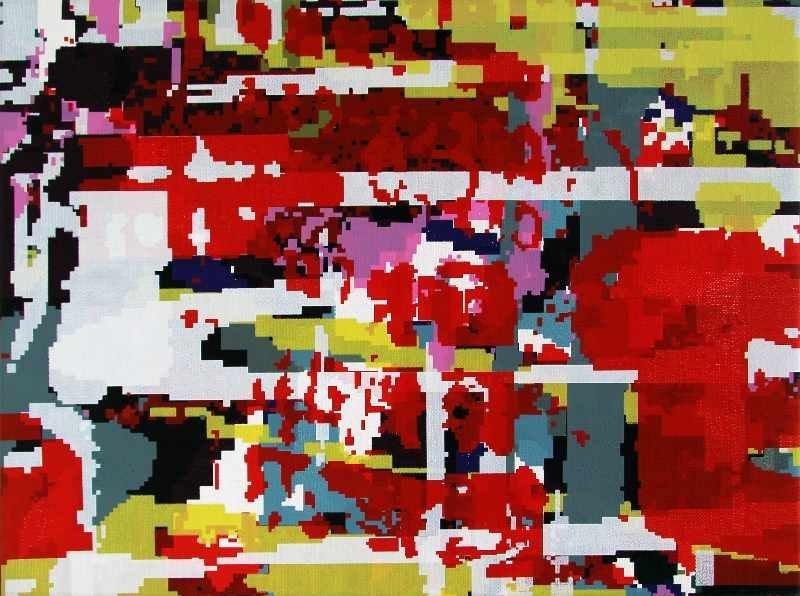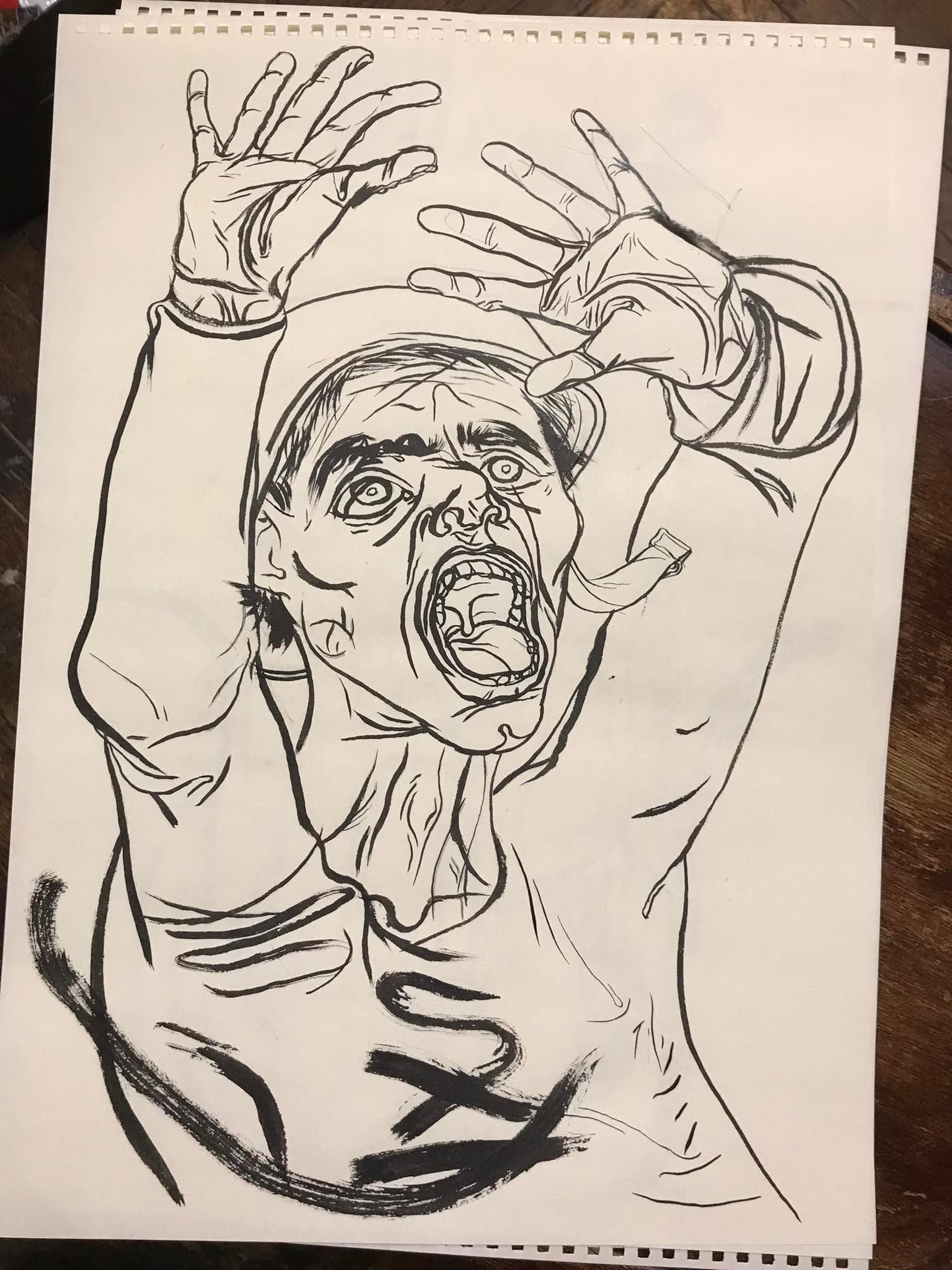INTERNATIONAL PANELING/October 2022
Image by Horster
What will Happen in the Winter to Come?
by Leo Kuelbs
Berlin
Here in Berlin, the weather has shifted into an intense Autumnal mode. A sharp drop in temperatures is accompanied by worries of looming gas price spikes and still the heating systems for apartment complexes are turned off. Welcome to another weird period of uncertainty.
Since mid-Summer, the virus has chilled out, which is wonderful. But what of the months ahead? In the USA, the President has recently told us that the virus time is over. But is it really? Interest in worrying about the virus may be “over,” but if gas prices go up and people use less heat, this opens the door for COVID to creep back in. And it seems that is part of the Russian war strategy. Get whomever else they can on their side (Italy), and pressure the Germans to stop helping the Ukrainians via higher gas prices.
In case you do not know, wages in Germany, for the vast majority, are not particularly high. When you consider spiking heating prices heading into a potentially viral winter, combined with this crazy inflation, you get a worrisome picture. Wherever wood-based heating solutions are a thing, hoarding is also now a thing. Cords of wood are the new “toilet paper” in Southern Germany. Meanwhile, some buildings with wood pellet systems are the targets of lawsuits by neighbors who are worried about the threats of global warming (emissions and deforestation) and secondhand smoke. Is it time to say hello to your old friend Nuclear Energy yet?
Is it time to say hello to your old friend Nuclear Energy yet?
And speaking of Nuclear, lately someone has been talking a lot about it as a weapon.
And speaking of Nuclear, lately someone has been talking a lot about it as a weapon. Whether bombs or power plants, that old threat is being dusted off and pushed back into our faces. Honestly, I just can’t see anyone gaining much from going down that road. But I guess we are not having rational conversations anymore. They are out of fashion!
But hey, this coming winter also brings some positives. First off, Germans like morbid worrying. And there’s plenty of worry to keep us occupied all winter long! Also, I am learning to appreciate colder and wetter environments. I mean, California isn’t on the list for places to move anymore. I like Texas, but really? Also, Mediterranean areas which haven’t been upgraded to deal with extreme weather are looking a lot less attractive. Better just to visit.
Sure, the winter here is long, gray and depressing. But I would rather that than dealing with fires and floods all of the time. The cooler side of moderation is where I hope to land, and Berlin fits the bill, so far. I just have to trick myself into thinking of Seasonal Depression as a blessing! Working on it…
Shorty of the Month: Karl Erickson and Justin King’s “Time Travel through Water”
intro by Leo Kuelbs
“Time Travel through Water,” was created in 2016 by artist, Karl Erickson with soundtrack provided by Justin King. The video appeared in the show “VIEWS,” which was presented on the Manhattan Bridge as well as the IFP center in Brooklyn, NY. Erickson had this to say, “By entering the REPTILIAN BRAIN the aquatic casing can be contacted, thus connecting and conducting the BODIES and MINDS to and through the water that surrounds and makes up nearly ALL. This permeable membrane spans distance, yes, and time, allowing to be made faraway moments near, collapsing place upon place, moment on moment, each, like layers of pixelated light, ELECTRONICALLY CHARGED, and sculpted by the one before and after, above and below, time shaping space, space shaping time.”
Since then, Karl has moved to Memphis and gone into teaching, as well continuing with curation and creating work. Meanwhile, musician, Justin King is back in Oregon, playing the guitar and making wine with his family. There’s a lot to know and love these gentlemen, so check them out! Now check out some trippy alligators!
The Winner Takes it All: ABBA-TARS in Review
by Dirk Lehr
Berlin
ABBA never looked like pop stars, never acted like pop stars and never were pop stars. Pop stars serve a Zeitgeist, a target group and sometimes maybe even a whole decade. ABBA never did that. ABBA have always been much more. ABBA were never just for the moment, ABBA have always been for eternity. And what this eternity looks like in the future can be seen in London since May of this year. Night after night, the four Swedes are on stage in the specially built ABBA Arena and give one concert after the other. Of course they don't perform there themselves. The four are clever enough not to do that to themselves or to us. They send avatars on stage to do the job for them. Luckily.
I've been listening to ABBA music for 43 years. At least one of their songs every day. Every day. Year and year out without exception. I've never seen them live, never attended a concert. When I was finally old enough, they stopped making music together and went their separate ways. When they were offered $1 billion for a tour a couple of years ago, they turned it down. Luckily.
Once again, ABBA have done it much better than others, for example bands that just don't want to admit that everything has its time. Anyone who has recently attended a Depeche Mode concert knows what I am talking about.
ABBA have always been smart and ahead of their time. Once again, ABBA have done it much better than others, for example bands that just don't want to admit that everything has its time. Anyone who has recently attended a Depeche Mode concert knows what I am talking about. And it is to be feared that they will not stop there.
ABBA recently gave one last concert: ABBA Voyage. Not in front of an audience, but in a studio surrounded by over 170 cameras. Not in fancy glitter dresses, but in overalls reminiscent of astronauts and connected to electrodes. Their performance was recorded using the motion capture process and their movements transferred to the digital avatars, creating human images of them. Calculated back to the year 1979 in fast motion, they are now standing there on the stage in London, as if time had stood still. ABBA have given one last concert for eternity and will let their ABBAtars do their job from now on. My luck. I can see ABBA as I never got to see them but always wanted to see and will always want to see. I was at a real ABBA concert. It's magical when the first notes of The Visitors sound and Agnetha, Björn, Benny and Frida come up from the ground of the stage. Then there they are. They sing, walk, dance, play guitar and piano and spin around like real people. Agnetha wears a white dress to Dancing Queen. It's not flat, it's transparent so you can see her legs showing through. Even in close-ups, every detail is right, the skin and every single hair exposed by the spotlight. Everything looks real. They talk to the audience. And their reaction to the audience's reaction is so accurate it's almost uncanny. It's so perfectly done you stare at it for 90 minutes trying to find a mistake. An hour and a half full of Waterloo, S.O.S., Gimme, Gimme, Gimme, Voulez-Vous, Mamma Mia, Knowing Me, Knowing You, Fernando, Chiquitita, Lay all your love on me, When all is said and done or Don't shut me down. And when the four of them sink back into the stage floor while the last tones of The winner takes it all, you're still trying to understand what you just saw. It's so incredibly well done that it doesn't matter if it's real or fake. It's just great. A mixture of nostalgia, present and future. Of course it's not a real concert. It's much better than that because it leaves room for imagination. May this last concert never end. Thank you for the music.
Image by Juliane Pieper
Next Stop: Poetry Place
by Caitlin Grace McDonnell
Brooklyn
Late July Dinner Party, 2022
A rooftop in Brooklyn
A friend turning 50, flutes
of bubbly with elderflower
liquor, splash of salmon folded
into the layers of grey and navy
sky. We could see the roof
of an elementary school, benign
as a Richard Scary book.
City kids. They think they know
everything, we joked, And they do.
But every once in awhile,
there’s some very basic life thing
they missed. My genius son asked me
if we had A zip code, one woman
laughed. I recalled when my
opinionated daughter learned
that France also has presidents
last week. When the slight
glow of orange and pink was
swallowed by the grey, the
rain began, lightly at first,
but determined. We loaded
all the dishes into a bucket.
Threw foil over the food.
The kids will take the tests
for the special schools. They
will get one off their list. More
ice will have melted when they
leave home for college, releasing
prehistoric viruses. They’ll find
a campus in the part of the country
not currently on fire, not under
water yet, where girls are
allowed to have a body, a mind,
a zip code A president. Just got a call
that the host tested positive. Sliver
of light out the tiny window.
Image by Tom Rotenberg
Poetry in the Choice
by Mark Bailey
Minneapolis
It's a little-known fact that American Abstract Expressionism initially became popular with the covert support of the CIA. The CIA wanted an example of distinctly American creativity to fight the Cold War and Abstract Expressionism is the weapon they chose. Sometimes I wonder about the long term impacts of this on the art market. And on the contents of modern art museums.
This is as far as I'm comfortable going when talking about the art world. I eked out a living for years as an oil painter, even opening my own Minneapolis gallery at one point, and I never learned a thing about the art world. That doesn't mean I don't ever talk about art. It means I'm a little uncomfortable when I do talk about it.
NFT art feels different from that whole world. It feels more spacious, somehow, especially where it overlaps with AI. More spacious and more free. No one is really an NFT art expert. There's space for all kinds of perspectives because we're all just making it up as we go along.
Recently, through this publication, I came across the Artist Journals of Adrian Pocobelli on Youtube. Pocobelli is actively collecting on Objkt.com, my favorite NFT art platform. He has very different taste in art than I do and I don't agree with some of his opinions. But I find he has important things to say about this new world we find ourselves in.
In Artist Journal #27, Pocobelli made the point that art comes from the creative act, regardless of what technology is used to carry out that act. He mentions the little-known fact that just about anyone can learn to oil paint passably in about two weeks. Underneath the mystery, painting is a craft like any other. It's a system of practices and techniques not unlike those programmed into the computers that output AI art.
The new technology may reduce the creative act to a push of a button. Increasingly, the only choice an artist faces is whether or not to press this button. "Is the poetry in the choice?" asks Pocobelli. I feel like it is. Like the choice to bring something new into the world is being stripped down to its bare essence by emerging technology.
…there are gatekeepers, but all that qualifies a person to be a gatekeeper in this movement is a small investment in the art and a nontrivial social media following.
What this all means is an open question. A question that may not yet even be fully formed. Having worked with a few serious players in the NFT world, I'm not really clear about where this is heading. Crypto Finney, a 22 part NFT comic I wrote, just came out in physical hardcover format. Next month, I'll be displaying my AI portrait series 'History and the Machine' at a local blockchain event. These are small things, but they're part of a vast global art movement that's barely beginning to take shape.
This isn't a movement controlled by any one group of people or geographical region. True, there are gatekeepers, but all that qualifies a person to be a gatekeeper in this movement is a small investment in the art and a nontrivial social media following. Meanwhile, AI has become so accessible that anyone can theoretically produce high quality art on a low cost device. The end result, so far, has been a movement characterized primarily by excitement. Whatever is ultimately happening, it's exciting.
NYC’s “LIGHT YEAR” Projected Video Art Program Prepares for its Final Season
by Leo Kuelbs
Berlin
Since 2015, the LIGHT YEAR program has appeared every first Thursday on the Manhattan Bridge in DUMBO, NYC. It was decided recently that after 8+ years, that the 100th show, in August of 2023, will be the last one with a possible celebration to follow.
The LIGHT YEAR project was conceived and initiated by myself, in late 2014, along with the support of my colleagues Farkas Fulop, of Glowing Bulbs and John Ensor Parker. Once the concept was agreed upon by the three of us, the DUMBO Business Improvement District and the NYC Dept. of Transportation gave the show their blessings and by April of 2015, I had purchased the projectors and we were ready for our first show in May of that year.
The idea for LIGHT YEAR was hatched in Leicester, England, during a trip to United VJs Full dome Festival. After screenings and seminars in a 70s era planetarium, I would check regarding the progress on the New York Festival of Lights. As I watched via my phone, I noticed that the event was massively packed and that, since our successful mapping-based presentations on the Manhattan Bridge (Immersive Surfaces in 2011 and Codex Dynamic in 2012), word of mouth had spread and there was massive pent-up demand. Both Parker and Fulop were contributing to NYFoL in major ways, while I helped with curating the large works on the bridge’s anchorage.
The crowd was so large that the York St subway stop needed to close in order to help get the excess people out of the station. In short, it was a great and edgy surprise. But much mush more than anyone could have anticipated.
In the short trip back to London, the idea for a monthly single channel show came about. Partly, in order to be keep the “light art” connection going on the bridge and in the neighborhood, but also to have a continual, though more modest presence for the year of 2015, which the United Nation’s deemed, “The Year of Light and Light Art.” Also, a bar and plan for musical programming in the Manhattan Bridge’s archway, as well as open studios and gallery openings took shape for each month’s First Thursday. And LIGHT YEAR fit well with that.
Much has changed since 2015 and its time for the programming to evolve, along with the neighborhood.
The show went on after the initial year, through the COVID time when we were obliged to explore a greater online experience since the site was shut down, and finally into this new era. Much has changed since 2015 and its time for the programming to evolve, along with the neighborhood. The post LIGHT YEAR 100 plans are wide open. And the whole process is under the NYC Department of Transportation and the DUMBO Business Improvement District. But until then, we have another year of programming to go. Plus, besides the bridge and LIGHT YEAR’s online presence, the show has expanded to Berlin (SCOPE BLN) and Toronto (The Drey). Well over 1000 creatives have contributed to the LIGHT YEAR platform, and through social media, LIGHT YEAR and its predecessors have made light art on the Manhattan Bridge a common meme.
Finish lines sharpen focus and sweeten memories. We hope to see old friends and new in the upcoming year, at whatever site you can manage. We look forward to that and thank everyone who has been a part of LIGHT YEAR to this point and onto the 100th episode!
“Thug Lord” by Str4nge Thing (AI surrealist)
AI Summer
by Adrian Pocobelli
Berlin
Artificial intelligence is the most interesting thing happening in the visual arts right now. New software tools like Midjourney and Dall-E have created an entirely new genre of visual art. Although AI tools have been around for years (recall Google’s AI art tool from a few years back), new technological developments have enabled a whole new level of artwork that is far more persuasive in its renderings.
Interestingly, the speed in which many AI works can be made makes it ideally suited for the blockchain, where works can be created, bought and sold within minutes. This has created a Petri dish of experimentation that has been evolving at lightning speed in the form of an ongoing visual conversation, as new works are minted several times a day.
Once people crack the AI code, they tend to create a surprisingly prolific output of surprising quality…
One of the biggest challenges in assessing these works is how to value them. Once people crack the AI code, they tend to create a surprisingly prolific output of surprising quality, leaving one wondering how much effort is required to make new works after a persuasive formula has been created. And does the effort actually matter? Shouldn’t it be all about the quality of the work, no matter how quickly or effortlessly it was made? Doesn’t twentieth century art teach us that the concept is equally, if not more important, that anything else?
One of the most interesting discussions about AI art, which I’ve been discussing on my YouTube channel about digital art, is the idea of the significance of the degree to which the artist is involved. Should an artist have to edit an AI work in order to add a human element, or is that simply an outdated view? Some artists go so far as to describe their work as ‘raw AI’, which I take to mean: no intervention by humans. In effect, this suggests that some people in fact prefer no human intervention, that it might in some way sully the output. It’s a provocative and fascinating question, and one of many that are coming up as we examine this new genre.
The Way We Wine: A mano Vineyard in Puglia
by Alberto Salvi
Puglia
This month I’ve been on holiday in my hometown, in Puglia. This beautiful land was the best way to spend relaxing time with a nice weather, great food and astonishing seaside.
Here I had the chance to visit a local winery called A mano, the Italian for handmade. This winery has more than 20 years now, born from Mark, a winemaker from California, and Elvezia, an Italian marketing guru.
They gave us the opportunity to harvest a tiny vineyard of a local grape varietal called Susumaniello. The origins of this name lie in the local dialect and it means the donkey, an animal that, such as this grape, it’s very difficult to tame.
Armed with gloves and shears, I filled my basket with bunches of grapes, then moved on to the next phase of crushing and derasping. This phase is done in a unique mechanic process, filling a tina with the mosto on one side, a nd discarding the rasps on the other.
Here the first quality check is held with the refractometer for measuring the sugar content of the first mosto, that will lead to a certain alcohol level.
Tasting the so obtained juice is already an experience: imagination will drive you forward in time towards the final complex shape of that wine.
I also had the chance to taste a rosé cold fermented mosto that was one week old, guided by the wise words of the winemaker Mark. Even though rough and crispy, you could tell that was already wine!
Definitely magic.
The most teachable moment for me was possible only thanks to the great mind of Elvezia: she planted 17 different varietals —autochthonous and allochthonous— in the same vineyards, one per row, as being a relevant case study. Once harvested the fruits, we had the chance to taste a grape from each of these bunches, enlightening differences at this very early stage: even though it’s commonly easy to believe it’s just grapes, we could evaluate distinct sweetness, acidity, aromas, presence of polyphenols like tannin in a thin or a thick skin. It was a unique and instructive occasion to compare this large number of varietals in such a narrow timespan.
This fascinating journey concludes with the winery’s production tasting. Sit around a large table, Elvezia has enchanted us with their story, and how hard work and an overflowing passion for the wine, the territory, the people, led Mark and her to turn their even visionary ideas into reality.
I was very impressed by his choice not to use oak barrels for aging their wines. Oak does not belong to this land, and it would go to contaminate what is a product that tells, at every stage, about Puglia. Apulian grapes already possess a marked ability to create structure and complexity in wines that do not, therefore, need the passage in barrique.
She conveyed to us all her dedication, passion, and ideology, but more importantly, along with Mark they’ve been able to convey all of this in their bottles. We then tasted 12 of them, ate some local food such as cheese, focaccia and raw cuts, and enjoyed the moment at the table.
Returning home with a warmed heart, culture and education, and a few bottles. This is how a wine tasting is meant to be, this is how disclosure is meant to be.
3 Questions with…Ryder Cooley of The Dustbowl Faeries
intro by Leo Kuelbs
A few years back, I had a place in Hudson, New York. Hudson gets a lot of coverage in the New York press and has a very interesting and colorful history. Lots of ups and downs and it was even a second candidate to be the capital of New York, many moons ago. Henrick Hudson sailed his boat up the river and loved the fields of clover. Later the Dutch did their thing and later still Hudson became a place of intrigue, mystery, drama, and general trouble-making of all stripes.
I first saw Ryder as she hosted the open mic at the wonderful (now closed) Helsinki. Always a great time loaded with surprises. Occasionally, I even jumped onstage to do some drumming and eventually wound up having a great time playing with Ryder and her crew. That’s my little intro. Let’s let Ryder tell you the rest in her own words…
The Questions:
1. Can you tell us about your background and your band, The Dustbowl Faeries? 2. The Dustbowl was a part of Oklahoma, especially in the early 30s, right? Do you see any similarities between that time/place and Upstate NY? 3. You don’t only play in the band. Can you tell us about your other interests and what you are looking forward to these days?
PS: The band was founded by Ryder Cooley (faerie queen) and her taxidermy spirit animal, Hazel the Ram. Ryder and Hazel are joined by Jon B. Woodin (rocket faerie), Liz LoGiudice (river faerie), Andrew Stein (time faerie) & Rubie LaRue (feisty faerie).
Artist in Focus: Birgit Jensen
Birgit Jensen, FUN-VI, 2014, acrylic on canvas, 30x40cm
by Dirk Lehr
Berlin
Join us for a conversation with the Düsseldorf-based artist Birgit Jensen on the occasion of her museum exhibition "Stories" in the German Serigraphy Museum Filderstadt and the impact of Andy Warhol on her work.
Birgit, Andy Warhol, the master of serigraphy, established screen printing in art. Andy Warhol and Me was the title of a solo exhibition of yours in Berlin in 2017. How does Warhol influence your work?
Like Warhol, I use a screen to bring a motif onto the canvas. We both use a technical process for our art that brings a very unique aesthetic to the picture. That was revolutionary in the 1960s. Art was dominated by abstract expressionism, a form of painting considered elitist. And on the other hand, with rapidly increasing prosperity, manual work was increasingly regarded as menial work. Warhol banned the visibly handmade from the picture. His work appears flawless and distant. He wanted to disappear behind the picture. For me, screen printing is more about its aesthetic quality. On the one hand, this enables a homogeneous, brilliant application of paint to the canvas, on the other hand, the process gives me so much leeway that one wonders how is it done? Like Warhol, I don't want to see the brush strokes on the canvas.
But are you still a painter?
Yes of course. For me, the act of painting doesn't take place with a brush, but with a squeegee and in the prepress stage, for example when making the films and applying the paint to the canvas.
What are the differences between Warhol's work and yours?
With his mass reproduction, Warhol questioned the original and its “value”. He also used screen printing to bring art to the masses, much like consumer goods were used in his day. The possibility of duplication was a blessing and an expression of democracy. The question of the original is very different today. A reversal has occurred through the digitalization, perfection and professionalization of reproduction techniques. The digital development has changed our perspective. We're looking at technological advances from exactly the opposite direction than we did in the 1960s. We are more critical, on the other hand we can do a lot more, much faster, we are extremely networked, we have a huge pool of possibilities. It is therefore a necessity for me to relieve my work of the perfection of technical reproduction.
How is that expressed in your work?
I do not use screen printing as a duplicating tool. Each picture is unique. This also shows that the picture is ultimately the result of a painterly act. The subtle aesthetics of my work are important to me. As in painting, layers are placed on top of each other, which creates a unique depth of the picture. There are different surface qualities. My pictures are not technical screen prints and are not graphic products. They deal with the problems and questions of painting.
Gradations in color are often created by grids. Print screens are still known from roughly printed images in daily newspapers, but due to their tiny size, the screen dots can no longer be seen with the naked eye. In my pictures, on the other hand, they are huge. They are not only there to model the colour, but also to visualize the transformation that the pictorial subject is undergoing. They refer to the concept that determines my engagement with painting.
What role does color play?
A central role. Color is a key element in the composition. It determines the "key" of the image. Color is not only material, but also emotion. Warhol also made targeted use of the psychological effect of colors and color compositions. In this way he controlled the attractiveness of the image motif for the viewer. Just think of his portraits of prominent people. He was able to manipulate the content of the statement with the color combination - here, for example, the portrait of Richard Nixon should be mentioned, to which Warhol gave almost toxic-looking orange eyes. He produced some works from his Death and Disaster series in fashionable colors such as lavender or pink, which creates a completely different effect than his black and white pictures. The color defines the image's identity, it is its DNA.
Birgit Jensen is represented by Hosfelt Gallery, San Francisco
The group exhibition „Stories“ at Serigraphy Museum Filderstadt which includes works by Birgit Jensen runs until December 2022, 11th
Venice Photo Diary!
by “Bob” Vitali
Venice
Hello readers! I am Roberto Vitali, born in 1994 in a small city of northern Italy and currently enjoying “la deutsche vita” in Berlin. I am a self-taught photographer with a passion for documentary and street photography. Being fascinated by eastern Europe I decided that Berlin would have been a good mix of culture to develop my passion and my interests.
After some hot months of the Berlin summer, I travelled back to my hometown in Italy for some even more hot August days where it’s unbearable to go outside on the streets if not after 3pm. I didn’t have anything planned for my summer holidays, but I knew I wanted to take the chance of being in Italy again and discover places in which I haven’t been in many years. My good friend who studied with me during the master university years was living near Venice, in Chioggia. So, we thought about a road trip from Venice to Croatia for the weekend. After a couple of days in my hometown I hopped on the fast train and reached La Serenissima, Venice.
Armed with just my pocketable 35mm camera and several rolls of film I wandered through the streets of the city, avoiding huge groups of tourists, drinking Select spritz for €1,50 and eating “cicchetti” at the local “bacaro.”
Couldn’t help myself but stop at Piazza San Marco and take a photo of the people enjoying the sunny day on the terrazza.
Very classic photo from Venice, a gondoliere waiting for some tourists for a ride on his gondola, one of the best-known symbols of Venice.
This has to be the coolest tourist I’ve seen around Venice, rocking those weirdly shaped sunglasses.
CCTV in Italy
Just outside the main streets filled with tourists with their selfie sticks there are areas there are quiet and can be enjoyed to the fullest.
After having walked the whole day and stopped at each bacaro to drink spritz we were exhausted and called it a day. On the way back we were greeted by this wonderful sunset. The shop give somehow more character and reality to the picture. Showing the perfect contrast of Venice, historical romantic city with beautiful facades of the old palazzi in contrast with the souvenir shops that are spread around the main veins of the city, selling the most ridiculous things that will last less than a bottle of Select.
Meanwhile…Back in Berlin…
“all of a quiver” by Mona Hatoum at KINDL, Berlin
Artist’s Visual Report from Kiev
by #headacheeartlaboratory
Kiev
Warning: Some images are pretty graphic.
#headacheeartlaboratory
#headacheeartlaboratory
#headacheeartlaboratory
#headacheeartlaboratory



